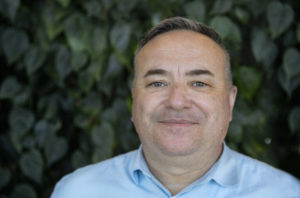
- This event has passed.
SOLID Seminar
SOLID Seminar with Science Director Aymeric Roberts, MAXIV

As scientific director for Physical Sciences at MAX IV laboratory, Aymeric Roberts is responsible for managing, in coordination with the scientific director for Life Sciences, the Science Division of the Swedish synchrotron light source. With the many scientists and technical professionals of MAX IV, he is leading the continued development of a scientific vision for our laboratory, that translates into actions for the operation of our user facility.
Since the beginning of his career, as beamline graduate student, post-doc, and scientist at the European Synchrotron Radiation Facility (France), and later at the Linac Coherent Light Source at SLAC National Accelerator Laboratory/Stanford University (USA), Aymeric Roberts have focused on X-ray Science methods and developments with highly brilliant X-ray beams by advancing instrumentation. This is, in particular the case, with using X-ray Coherence, which is one of the unique characteristics of the X-ray beams that are generated by Free Electron Lasers and 4th generation synchrotron light sources.
Scientifically his interests are in contributing to a better understanding of the interplay between the structure and dynamics of disordered and amorphous materials.
Title: Perspectives on X-ray Coherence
Nearly diffraction-limited X-ray beams from 4th generation light sources (1), such as the one generated by MAX IV (http://maxiv.lu.se, Lund, Sweden), offer the potential to revolutionize technical approaches, among which: time-resolved X-ray microscopy, X-ray tomography, small-angle, and Bragg ptychography, X-ray Photon Correlation Spectroscopy (2), in-situ and in-operando scattering and diffraction, to name a few…These techniques, central to studying scientific questions in physical and chemical sciences, will support significant contributions in developing a better understanding of systems in diverse sciences areas such as energy production and storage, catalysis, quantum information technology, additive manufacturing, life & environmental sciences, cultural heritage…
One of the key attributes of the increase in the brilliance of these novel sources is X-ray coherence, which is expected to open opportunities for studying matter beyond what was previously available.
MAX IV will be briefly introduced as the synchrotron light source of choice to fulfill the current and future research needs of users in the Nordic region. A personal introduction to X-ray coherence and how it provides opportunities for novel experimental approaches to reach their full potential will be provided. We will mainly focus on speckle-spectroscopy-based techniques (2-4).
References
- Hilner, ”MAX IV Laboratory- A fourth-generation light source”, IUCR Newsletter 30 (3), 5 (2022).
https://www.iucr.org/news/newsletter/etc/articles?issue=155020&result_138339_result_page=5
- Grübel, G., A. Madsen, and A. Robert. “Soft Matter Characterization.” X-ray Photon Correlation Spectroscopy18 (2008).
- Robert et al., “Glassy dynamics and aging in ferrofluids”, Eur. Phys. Lett.75, 764 (2006).
- Perakis et al.,”Coherent X-rays reveal the influence of cage effects on ultrafast water dynamics.”,Nat Commun 9, 1917 (2018).

